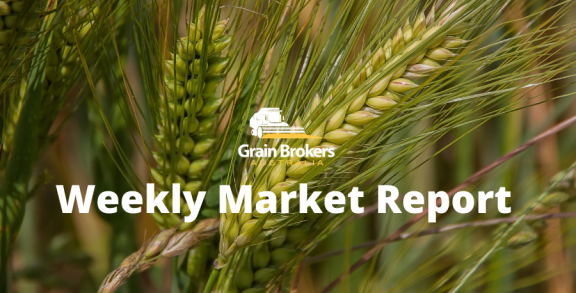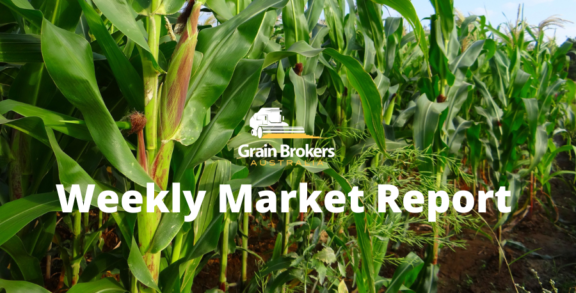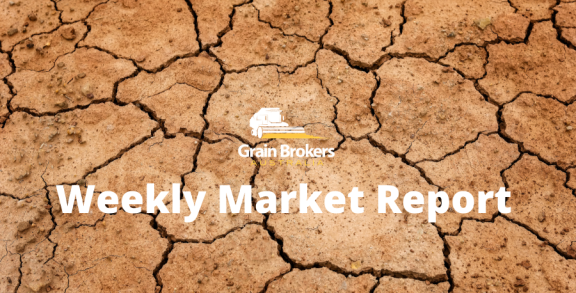
There are many reasons why Turkey’s president Recep Tayyip Erdoğan played a leading role in brokering last month’s landmark deal to open up a Black Sea export corridor for Ukraine grains. Foremost amongst those is Turkey’s increasing reliance on imports from Black Sea exporters to satisfy growing demand and keep food prices in check, despite an expected increase in domestic production this season.
Harvest of this year’s winter crop is well advanced despite being around two weeks behind normal in most regions. The wheat harvest generally commences in mid to late May and continues through to late July. This year the headers didn’t start rolling in earnest until mid-June, and by mid-July, the wheat harvest was still less than half completed after rain delays slowed early progress. Good weather in recent weeks has seen farmers make excellent headway, and harvest is expected to be completed in most regions in the next ten days.
According to the United States Department of Agriculture’s Foreign Agricultural Service, wheat yields will increase year on year, but the harvested area will decrease slightly. The FAS has pegged production at 17.25 million metric tonne, 2.25MMT of which is durum, off 6.8 million hectares for a yield of 2.54 metric tonne per hectare. This compares to last year’s harvest of 16MMT off 7.05Mha for an average yield of 2.27MT/ha.
Excessive rainfall, especially in the central and western parts of the country, has led to some quality downgrading. However, the high cost of crop inputs such as fertiliser and chemicals, which led to lower applications, is said to have had a bigger influence on final crop quality. That said, after a poor crop last year, farmers are reportedly happy with this year’s production and quality outcome in most regions. The one major exception is south eastern Anatolia, where drought conditions persisted for much of the growing season.
This season’s barley crop benefitted greatly from favourable weather conditions in May and June. Production is forecast at 7.4MMT, a 73 per cent increase on the 4.5MMT reaped last year. With the harvested area forecast to increase slightly from 3.7Mha in 2021 to 3.8Mha this year, the crop yield has done most of the work. Barley yields have increased by almost 60 per cent from 1.22MT/ha to 1.95MT/ha but were still significantly lower than the record production year of 2020/21 when the crop yielded 2.13MT/ha.
Farmers finished planting this season’s corn crop in June, with the early harvest expected to commence later this month. Good rainfall during and shortly after planting in May and June is expected to be reflected in near average yields. The FAS expect this year’s production to come in at 6.2MMT off a harvested area of 525,000 hectares, netting a yield of 11.81MT/ha. That compares to 6.5MMT off 540,000 hectares for a yield of 12MT/ha last season and a record crop of 7.1MMT in 2020/21 off 620,000 hectares for a yield of 11.45MT/ha.
As the first headers began to roll into the winter crop in June, the Turkish government announced a huge increase in the government intervention price paid to domestic growers to ensure production stayed at home. The Turkish Grains Board is offering farmers 6,450 Turkish Lira per metric tonne for Anatolian Hard Red Winter Wheat, 6,900TL/MT for durum wheat and 5,700TL/MT for barley. Using the June 5 exchange rate of 11.83 Turkish Lira to the Australian dollar, this equates to AUD545/MT, AUD583/MT and AUD482/MT, respectively.
These prices were almost three times that paid by the government in the 2021/22 season. However, the Turkish Lira was much stronger at the time, trading at 6.71 to the Australian dollar. At harvest last year, the Anatolian Hard Red Winter wheat intervention price was 2,250TL/MT (AUD336/MT), the durum price was 2450TL/MT (AUD365/MT), and the barley price was 1750TL (AUD261/MT).
To put these increases in perspective, the Turkish Statistical Institute pegged annual inflation for the last financial year at 78.6 per cent, and the producer price index, which measures the average change in the price of goods and services sold by manufacturers and producers in the wholesale market, rose 138.3 per cent. The price of food and non-alcoholic beverages increased 93.9 per cent, and the cost of agricultural inputs increased 123.7 per cent.
It is hardly surprising that these numbers make the Turkish government extremely nervous. Food inflation continues to be a major societal concern, and the prospect of civil unrest has increased dramatically. President Erdoğan’s lead role in the Ukraine export corridor discussions was a clear demonstration to his people that he was doing all he could to improve global grain supply and bring down domestic food prices.
Turkish wheat imports are forecast to increase to 10.25MMT, second only in volume to the 10.85MMT imported in the 2019/20 season. One of the main reasons for the increase is to replenish stocks run down over the last six months due to the war in Ukraine and its limitation on Black Sea trade. Turkey imported around 9.4MMT of wheat in the 12 months to June 30, with the leading suppliers being Russia with 6.3MMT and Ukraine with 2MMT.
Turkey is the world’s biggest exporter of value-added wheat products, and global demand is increasing rapidly. In the 2021/22 marketing year, wheat exports, including wheat flour and wheat-based products, totalled about 6.7MMT on a wheat equivalent basis, up from 6.45MMT the previous year. This comprised around 4.1MMT of wheat flour, approximately 1.9MMT of pasta and 350,000MT of bulgur. In 2022/23, exports are currently forecast to increase to 6.75MMT but could easily go much higher if the supply of wheat increases and the price decreases. The International Grains Council has Turkey in for 5MMT of flour exports suggesting the FAS number may be a shade conservative.
Barley imports are expected to drop significantly with the rebound in production. In 2021/22, imports totalled 2.9MMT, but this is forecast to drop to around 400,000MT in the current marketing year. Russia, Ukraine and Romania were the main suppliers with 1.16MMT, 1.09MMT and 365,000MT, respectively, last season. Corn imports are forecast to increase slightly from 2.8MMT to 3MMT to meet domestic feed and starch requirements. Ukraine has traditionally been the leading supplier, followed by Russia, further emphasising Turkey’s reliance on Black Sea exporters.
The grain corridor deal has undoubtedly boosted global confidence around wheat, barley and corn supply over the next twelve months. The Turkish consumer sees it as their saviour. On paper, it looks great, but the devil will be in the execution. The initial export flow will be on vessels stranded at port since the conflict began. The true test will be how many vessel owners are willing to send their ships into a conflict zone with significant uncertainty around insurance, safety, ability to get grain to port and the prospect of an escalation to the conflict at any time.
Call your local Grain Brokers Australia representative on 1300 946 544 to discuss your grain marketing needs.





